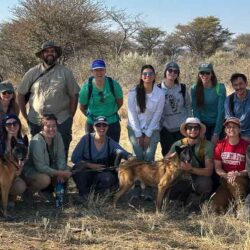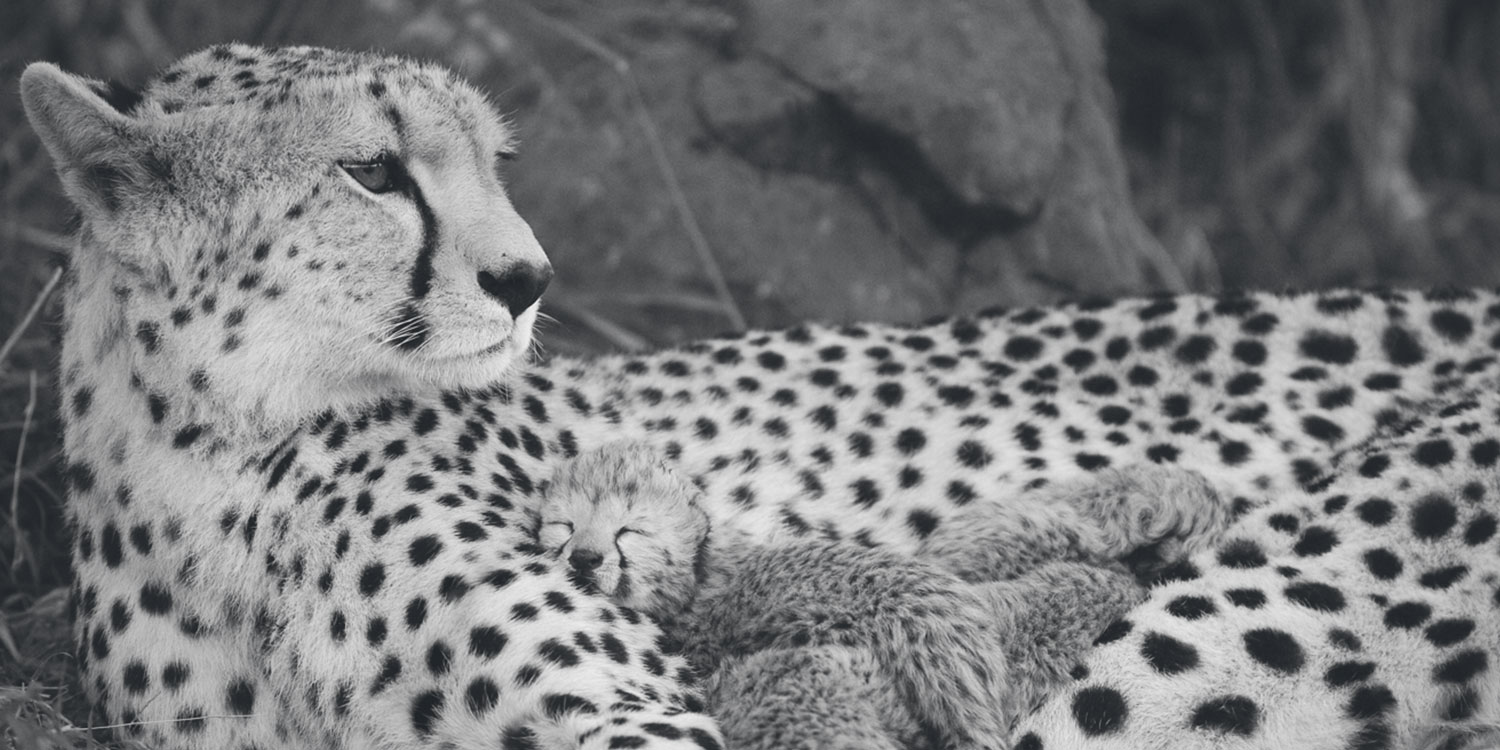Peaks and Paws: Scat Searching, Wild Landscapes, and Hidden Wonders…
-
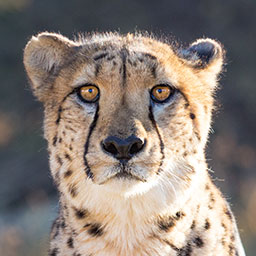
- by Tresia Shihepo February 21, 2025
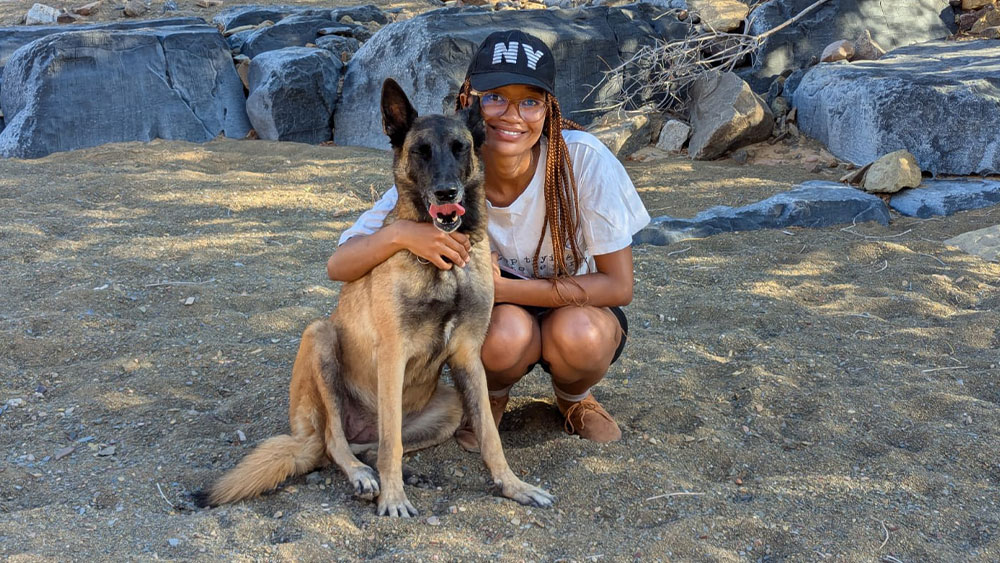
Namibia boasts of contrasting landscapes; one moment you may find yourself traversing lush green fields dusted with vibrant yellow wildflowers and glistening water puddles, and the next, the land transforms into an arid and rocky expanse. This makes road trips through this beautiful country incredibly adventurous! These are my exact sentiments when I think back to an exciting trip that I was on a few weeks back, to the Fish River Canyon. The purpose was to identify cheetah marking sites and collect scat samples, which will be used for genetic studies on free-ranging cheetahs in Namibia. I accompanied Tim, CCF’s dog handler, along with Enya, an exceptionally intelligent and enthusiastic scat detection dog.
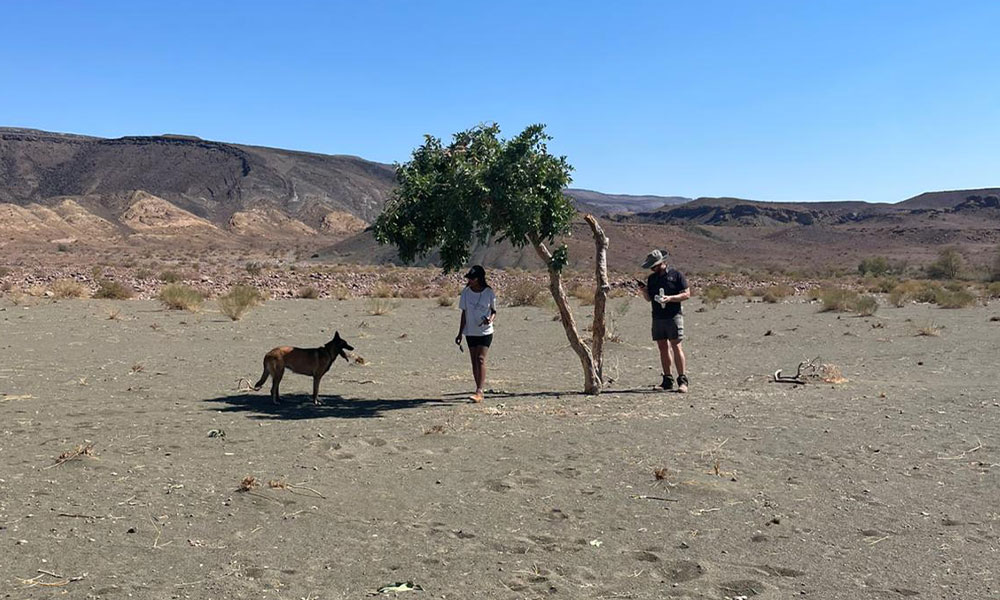
The Fish River Canyon lies in the southern region of Namibia and is surrounded by vast semi-arid, dry, and rocky plains, with scattered thickets, the occasional golden grass, and quiver trees standing as lone sentinels. The rugged and harsh nature of this land makes one wonder how anything could possibly survive there. And yet, the land is teeming with wildlife, including mountain zebras, kudus, oryx, ostriches, giraffes, leopards, brown hyaena, and, of course, cheetahs.
The days in the field were spent navigating through farms, stopping at landmarks such as towering rock bolts and ancient, gnarled trees in the hopes of locating cheetah marking sites. The first few days were particularly challenging. The sun was merciless, rising early and heating the ground to near unbearable temperatures, and it would only cool down during sunset. Enya would tire quickly, forcing us to leave her in the shade by midday while we continued the search on our own. One of the most thrilling parts of our expedition was a drive deep into the canyon itself, where we followed steep and narrow trails, and it almost felt like being on a rollercoaster ride.
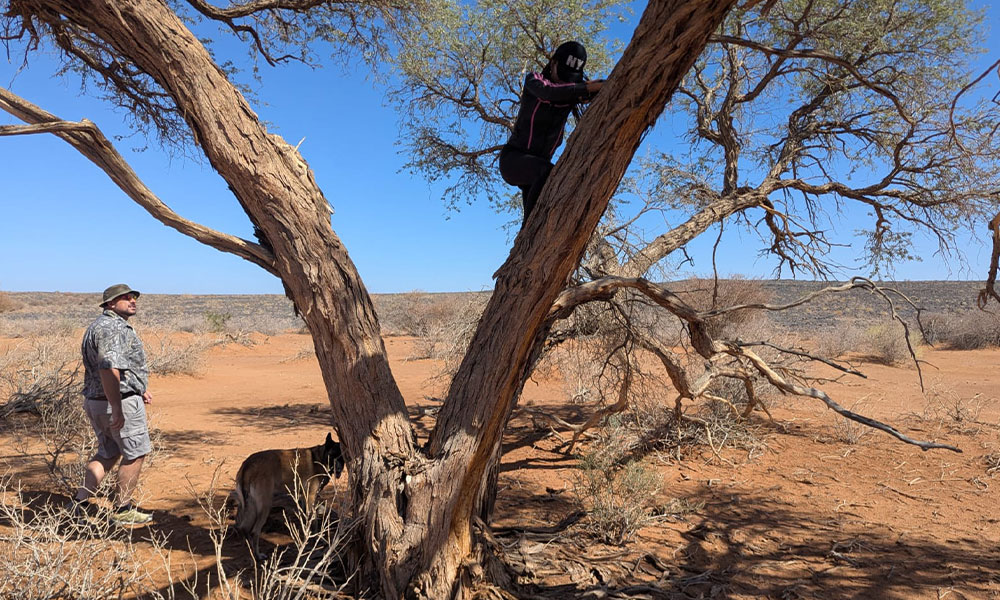
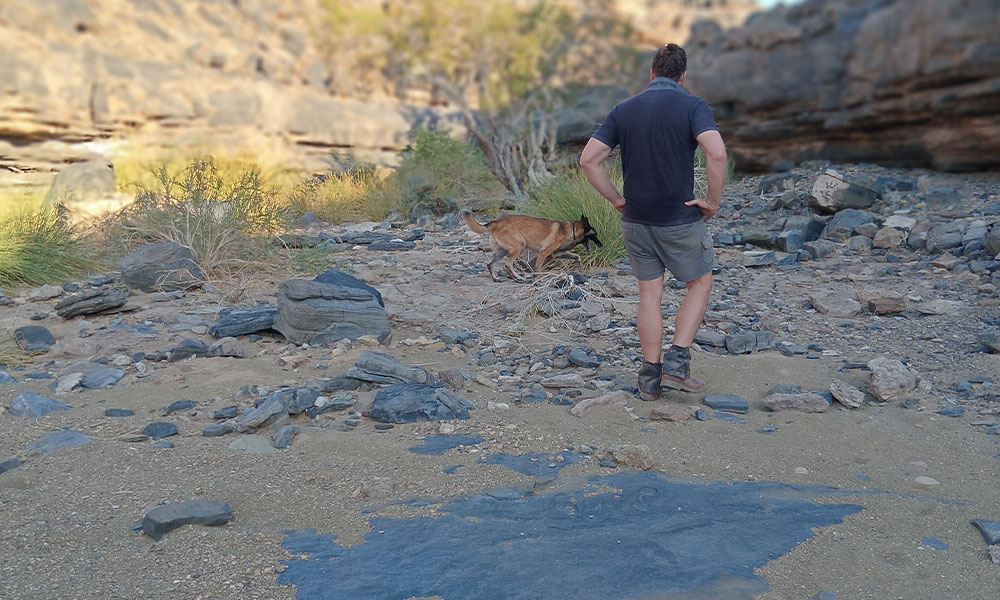
Though we were not able to find many marking sites on that day, we did come across a beautiful gorge of turquoise water, brimming with fish nestled in the canyon. And as if to remind us of Namibia’s unpredictability, a heavy downpour escorted us on our way back to the accommodation. According to the farm manager, the rain was one of the heaviest the game farm had seen all year, and by the next morning, the once rock-hard roads became treacherous mudslides.
The most rewarding moment came on our final day. After spending three long days collecting only a handful of samples and barely identifying any marking sites, we visited neighbouring farms—where we found what seemed to be a hidden mine of cheetah scat. We identified a total of twelve marking sites, some adorned with multiple cheetah spoor, further validating their presence. We collected so many scat samples on that day that what had first been an exciting discovery slowly started feeling almost overwhelming. Aside from cheetah scat, we also opportunistically collected a bounty of other carnivore samples—primarily brown hyaena from latrines, along with a few leopard and jackal scat along the way. Serving as a perfect finale to a week of tireless hard work.
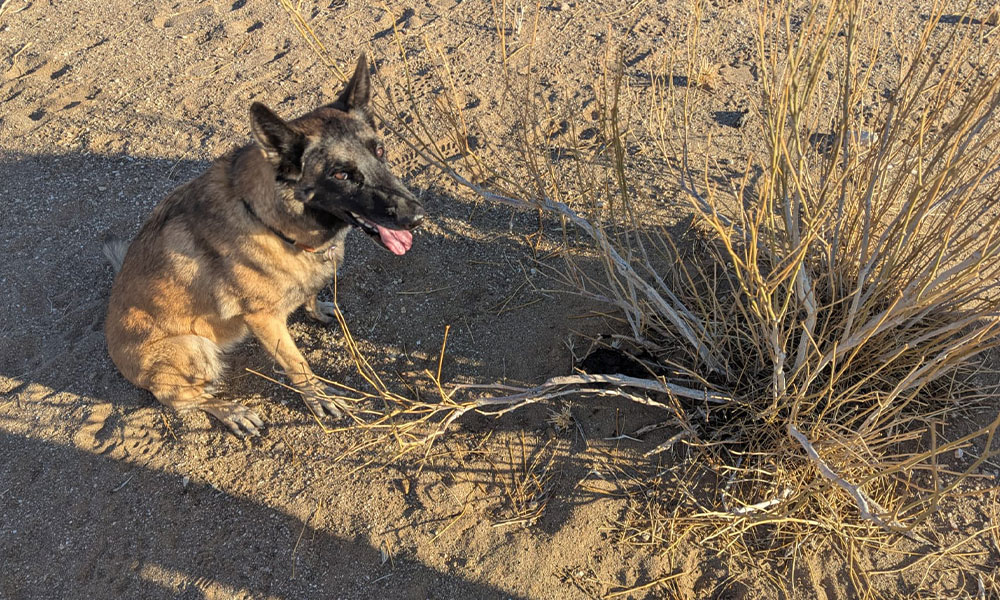
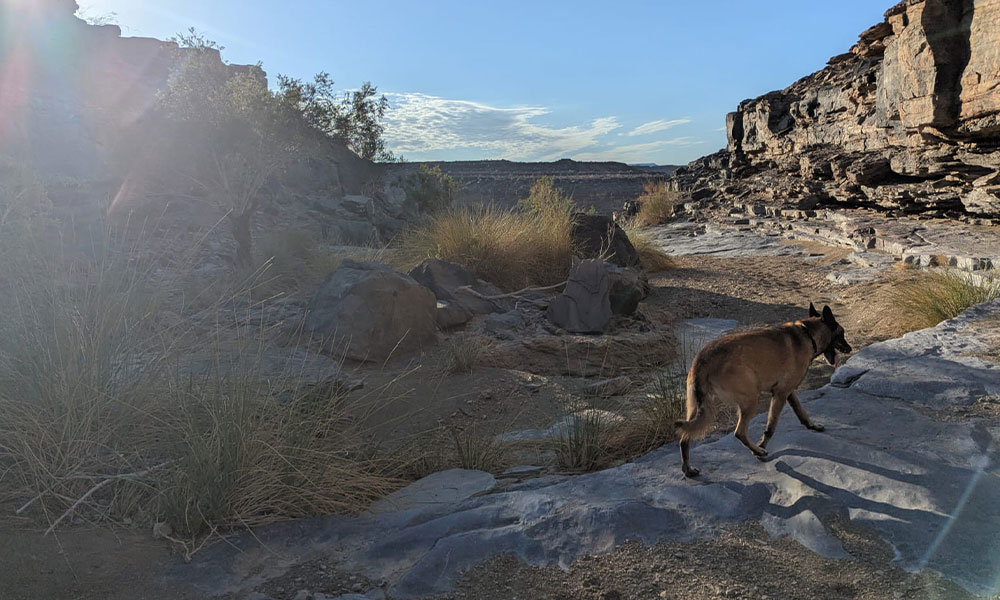
Aside from the research, long drives, and heat, this trip truly was a reminder of the raw, untamed beauty of Namibia. From the wildlife that somehow manages to thrive in these incredibly harsh conditions to the breath-taking views of the second largest canyon in the world, down to the rich history of the land. Once again reinforcing the importance of actively trying to conserve all this nature.
Related Reading
-
August 27, 2025
Sniffing Out Stories with the Scat Detection Dog Team


